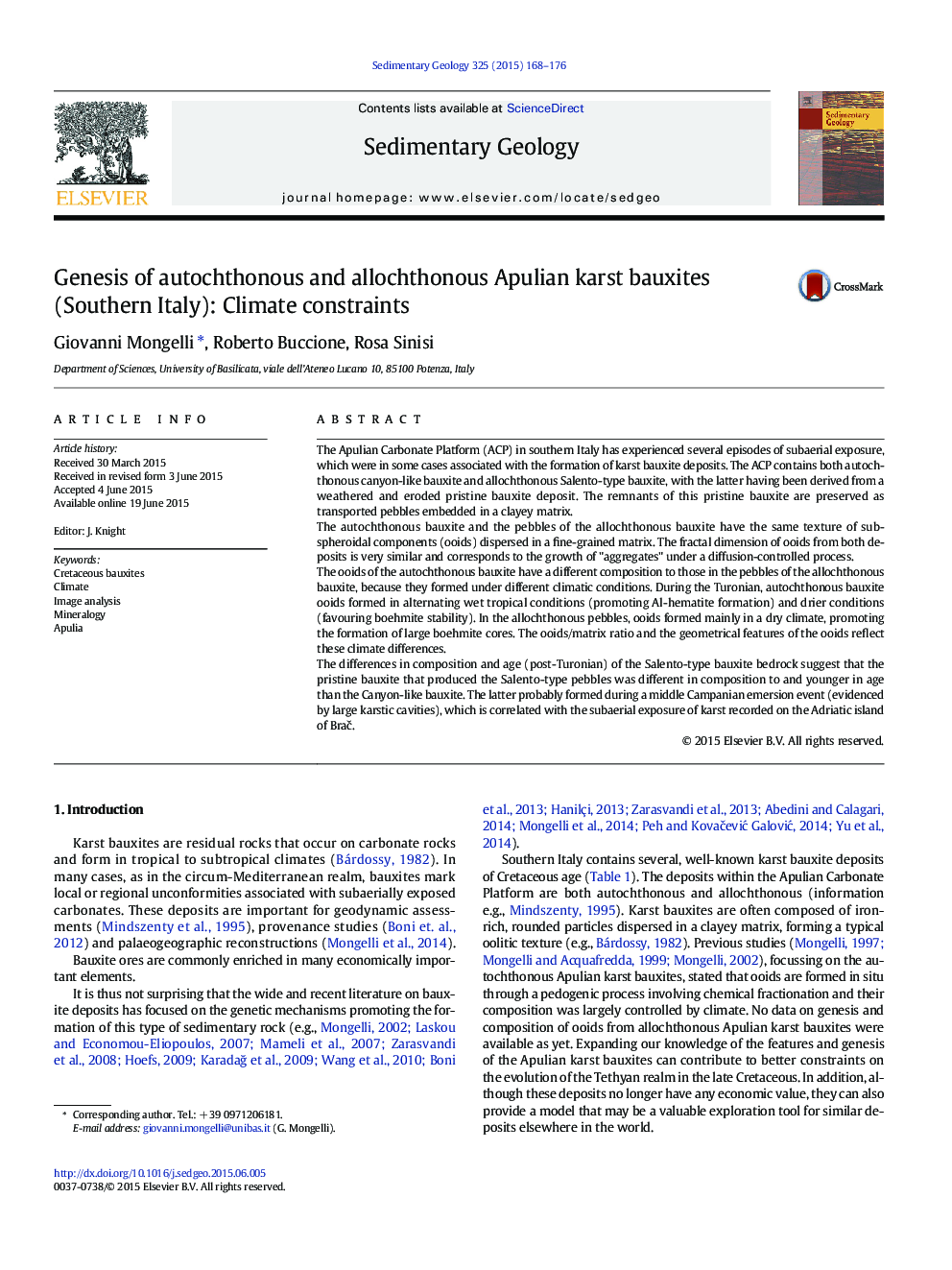| کد مقاله | کد نشریه | سال انتشار | مقاله انگلیسی | نسخه تمام متن |
|---|---|---|---|---|
| 4689234 | 1636038 | 2015 | 9 صفحه PDF | دانلود رایگان |
• Autochthonous bauxite and pebbles of allochthonous bauxite show the same texture.
• Differences in composition and geometrical features reflect different climatic regimes.
• The fractal dimension suggests ooids formation was a diffusion-controlled process.
• Fissure cracking hindering the formation of ooids was promoted by drier conditions.
• Allochthonous bauxite derives from a pristine deposit Campanian in age.
The Apulian Carbonate Platform (ACP) in southern Italy has experienced several episodes of subaerial exposure, which were in some cases associated with the formation of karst bauxite deposits. The ACP contains both autochthonous canyon-like bauxite and allochthonous Salento-type bauxite, with the latter having been derived from a weathered and eroded pristine bauxite deposit. The remnants of this pristine bauxite are preserved as transported pebbles embedded in a clayey matrix.The autochthonous bauxite and the pebbles of the allochthonous bauxite have the same texture of sub-spheroidal components (ooids) dispersed in a fine-grained matrix. The fractal dimension of ooids from both deposits is very similar and corresponds to the growth of "aggregates" under a diffusion-controlled process.The ooids of the autochthonous bauxite have a different composition to those in the pebbles of the allochthonous bauxite, because they formed under different climatic conditions. During the Turonian, autochthonous bauxite ooids formed in alternating wet tropical conditions (promoting Al-hematite formation) and drier conditions (favouring boehmite stability). In the allochthonous pebbles, ooids formed mainly in a dry climate, promoting the formation of large boehmite cores. The ooids/matrix ratio and the geometrical features of the ooids reflect these climate differences.The differences in composition and age (post-Turonian) of the Salento-type bauxite bedrock suggest that the pristine bauxite that produced the Salento-type pebbles was different in composition to and younger in age than the Canyon-like bauxite. The latter probably formed during a middle Campanian emersion event (evidenced by large karstic cavities), which is correlated with the subaerial exposure of karst recorded on the Adriatic island of Brač.
Journal: Sedimentary Geology - Volume 325, 15 July 2015, Pages 168–176
